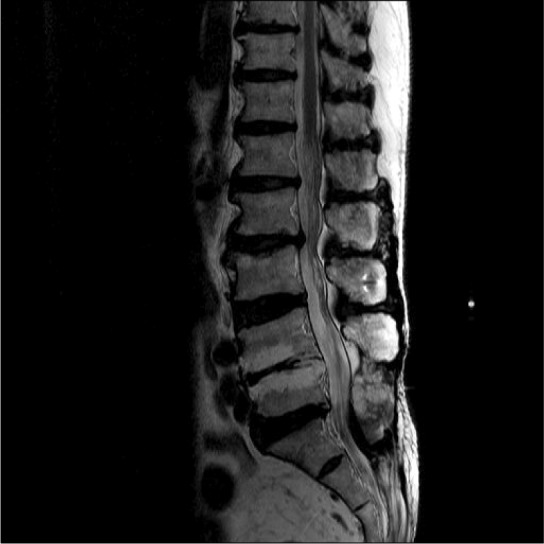Korean J Pain.
2013 Apr;26(2):199-202. 10.3344/kjp.2013.26.2.199.
Occurrence of Trochlear Nerve Palsy after Epiduroscopic Laser Discectomy and Neural Decompression
- Affiliations
-
- 1Department of Anesthesiology and Pain Medicine, Daejeon St. Mary's Hospital, The Catholic University of Korea College of Medicine, Daejeon, Korea. kjypeak@hanmail.net
- KMID: 1978670
- DOI: http://doi.org/10.3344/kjp.2013.26.2.199
Abstract
- Epiduroscopic laser discectomy and neural decompression (ELND) is known as an effective treatment for intractable lumbar pain and radiating pain which develop after lumbar surgery, as well as for herniation of the intervertebral disk and spinal stenosis. However, various complications occur due to the invasiveness of this procedure and epidural adhesion, and rarely, cranial nerve damage can occur due to increased intracranial pressure. Here, the authors report case in which double vision occurred after epiduroscopic laser discectomy and neural decompression in a patient with failed back surgery syndrome (FBSS).
MeSH Terms
Figure
Reference
-
1. Takeshima N, Miyakawa H, Okuda K, Hattori S, Hagiwara S, Takatani J, et al. Evaluation of the therapeutic results of epiduroscopic adhesiolysis for failed back surgery syndrome. Br J Anaesth. 2009; 102:400–407. PMID: 19164308.
Article2. Nishio I, Williams BA, Williams JP. Diplopia: a complication of dural puncture. Anesthesiology. 2004; 100:158–164. PMID: 14695737.3. Keane JR. Fourth nerve palsy: historical review and study of 215 inpatients. Neurology. 1993; 43:2439–2443. PMID: 8255437.
Article4. Gill JB, Heavner JE. Visual impairment following epidural fluid injections and epiduroscopy: a review. Pain Med. 2005; 6:367–374. PMID: 16266357.
Article5. Hilt H, Gramm HJ, Link J. Changes in intracranial pressure associated with extradural anaesthesia. Br J Anaesth. 1986; 58:676–680. PMID: 3707805.
Article6. Lundberg N. Monitoring of intracranial pressure. Proc R Soc Med. 1972; 65:19–22. PMID: 5015473.7. Gissen D, Philip J, Leith DE. Pressure in the epidural space with serial injection. Proceedings of American Society of Regional Anesthesia Meeting. 1987. Orlando, FL. Pittsburgh, PA: American Society of Regional Anesthesia.8. Rocco AG, Philip JH, Boas RA, Scott D. Epidural space as a Starling resistor and elevation of inflow resistance in a diseased epidural space. Reg Anesth. 1997; 22:167–177. PMID: 9089860.
Article9. Sortland O, Magnaes B, Hauge T. Functional myelography with metrizamide in the diagnosis of lumbar spinal stenosis. Acta Radiol Suppl. 1977; 355:42–54. PMID: 299686.10. Tabandeh H. Intraocular hemorrhages associated with endoscopic spinal surgery. Am J Ophthalmol. 2000; 129:688–690. PMID: 10844075.
Article11. Usubiaga JE, Usubiaga LE, Brea LM, Goyena R. Effect of saline injections on epidural and subarachnoid space pressures and relation to postspinal anesthesia headache. Anesth Analg. 1967; 46:293–296. PMID: 6067279.12. Zada G, Solomon TC, Giannotta SL. A review of ocular manifestations in intracranial hypotension. Neurosurg Focus. 2007; 23:E8. PMID: 18004970.
Article13. King RA, Calhoun JH. Fourth cranial nerve palsy following spinal anesthesia. A case report. J Clin Neuroophthalmol. 1987; 7:20–22. PMID: 2952674.
- Full Text Links
- Actions
-
Cited
- CITED
-
- Close
- Share
- Similar articles
-
- Approach for Epiduroscopic Laser Neural Decompression in Case of the Sacral Canal Stenosis
- The Survey of the Patient Received the Epiduroscopic Laser Neural Decompression
- A Clinical Study of Diplopia Due to Neurologic Disorder
- A Case of Herpes Zoster Ophthalmicus with Isolated Trochlear Nerve Involvement
- Combined Facial and Contralateral Trochlear Nerve Palsy in a Patient with Diabetes Mellitus



